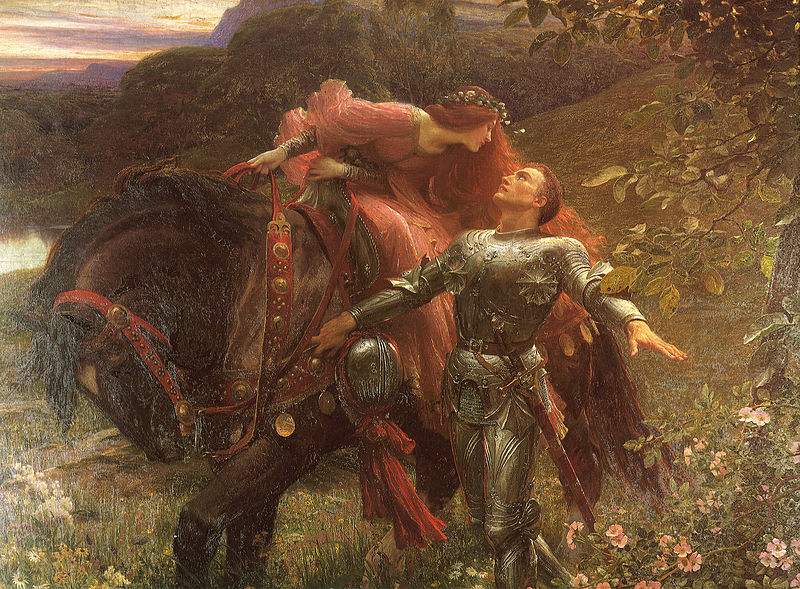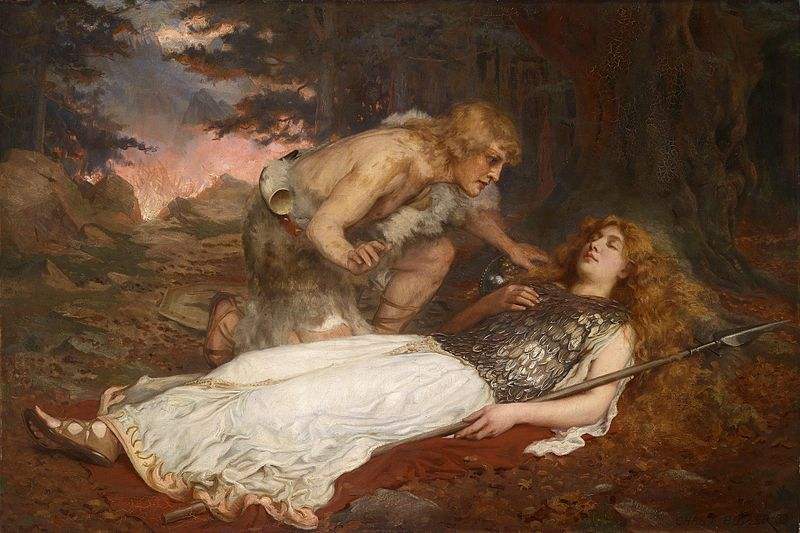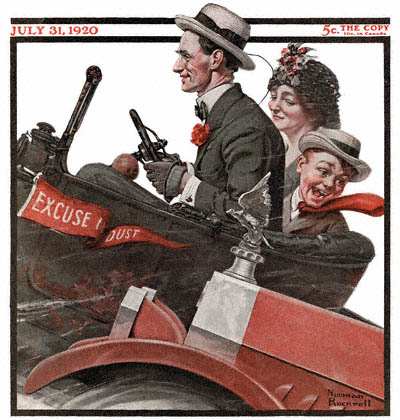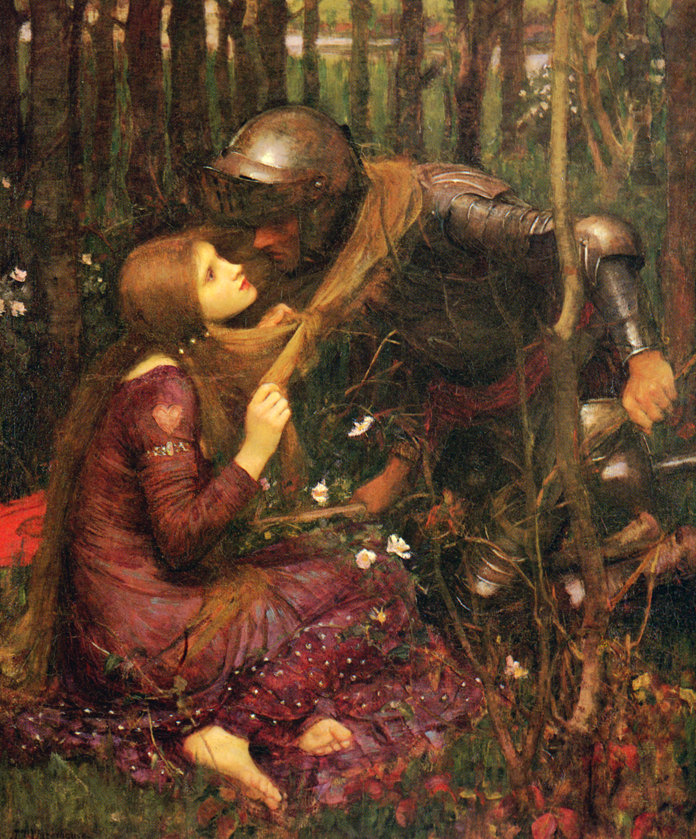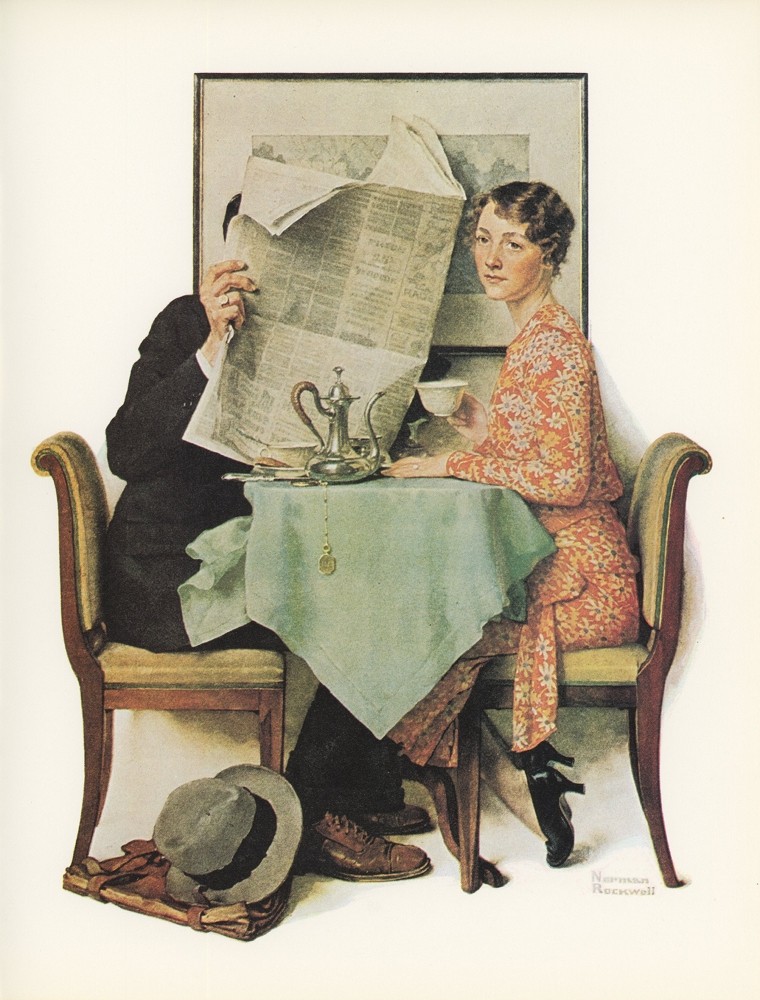by Plinio Corrêa de Oliveira
Saint Angela Merici wisely observed, “disorder in the world is the result of disorder in the family.” Over the last generation, the disorder in American family life has grown exponentially. In 1940, there was one divorce for every six marriages; by 1975, the U.S. divorce rate had climbed to one in two. Liberated from the matrimonial ties that bind, families are cast adrift. Amid their wreckage we find our children. A million divorces affect children each year. One in ten children will suffer three such marital dissolutions. “Perfect married life means the spiritual dedication of the parents for the benefit of their children,” the Angelic Doctor Saint Thomas Aquinas counsels, but social scientist Travis Hirschi reports that “the likelihood that the biological parents of a particular child will marry and stay together throughout the period of child rearing is lower today than at any time in the past.” It is in the wisdom of the past that we find the answers for today and the hope for tomorrow. That is why we are pleased to offer our readers the following adaptation of an article originally published in the Brazilian Catholic journal Catolicismo in October 1951. It comes with our heartfelt prayers for their families.
1940 Marital Status of Men and Women per 1,000 population
|
Never Married |
29,129 |
|
Married |
60,278 |
|
Divorced |
14,047 |
|
Widowed |
7,844 |
CPS* 2014 Marital Status
|
Never Married |
140,870 |
|
Married, Spouse Present |
123,911 |
|
Married, Spouse Absent |
3,609 |
|
Divorced |
25,302 |
|
Separated |
5,499 |
|
Widowed |
14,204 |
2.3 per 1,000 population in 1963 were divorced.
4.8 per 1,000 population in 1975 were divorced.
From 1960 to 1966, for all men under 70 years of age, who had ever married, 15% were divorced; 31% for women.
On analyzing many of the works that have been written against divorce, we can conclude that overall they deserve praise for their seriousness, clarity, and balanced reasoning.
However, nearly all use arguments that are somewhat academic. The arguments they proffer are fine for persuading well-intentioned intellectuals, but as a general rule they are entirely ineffective for the vast majority who make up public opinion, which, ranging between indissolubility and divorce, strongly leans towards the latter.
So one who is pro-divorce may be reduced to an embarrassed and bored silence by listening to conclusive arguments proven by facts and figures (which superficial souls always like) on how divorce is harmful to the family and the country.
He might even remain silent for a while, muttering something under his breath. But soon he starts all over again with the same point: “So, the unhappy spouse cannot begin his or her life again? Is it just to deprive spouses of the right to rebuild their happiness?”
All of us who have fought against divorce know how frequent this attitude is. The clearest arguments, the most penetrating arguments, simply roll off this attitude like water off a duck’s back! For, the divorce advocates merely retreat into themselves when exposed to the hammer of logic. And when the firing stops they re-emerge unchanged from their lairs. Therefore, an effective anti-divorce campaign must take this fact into consideration if it wants to gain ground. We must realize that we have not yet fully explored the way to approach or penetrate mentalities like this. It is essential to identify the cause of this state of mind so we may find the argumentation that will meet it.
That is why I want to speak about romanticism.
History books tell us this school of thought has died, which is true if we are talking about the Romantic Movement in literature and art. But is it equally true if we are talking about life in general? Do the ways of thinking and feeling that romanticism created really have no bearing on the mental and emotional habits of our contemporaries? Regarding marriage in particular, is it true that the people’s attitudes today are free from romantic influence? And what relationship exists between this influence and the problem of divorce?
First, let us recall some of the kinds of “heroes” and “heroines” of romanticism.
There is the “sensitive” type of hero. He can be imagined as a youth (there is nothing less romantic than fifty years of age) with fine, clean features. His large melancholic eyes are lost in the empty horizon. His hair and clothes are disheveled. His chest heaves with burning aspirations, undefined, torturing, seeking the complete happiness of true love.
But no-one understands him. In the deep recesses of his soul are awesome horizons. There are indescribable desires that need, seek, and beg to be understood by a “sister soul.” There must exist in the vastness of this world a being created to understand him. He is searching for her, for only in finding her will he have happiness… And so he wanders sadly through life until he meets her.
Then there is the romantic hero of the “terrible” type. He is morally identical to the previous type, though somewhat different in appearance. He exudes manliness, has an athletic physique, and a rather dark attractiveness, like a character from one of Wagner’s operas. He commands a great fortune, high social status, immense influence, everything, in short, that life can offer… But (and here is the “romance” of the scenario) there is a deep wound in his heart: a burning love, a tremendous disappointment, a weight as heavy and as cold as a tombstone, that will never find on the face of the earth a love that matches his heart’s desires.
Symmetrical to this is the figure of the “heroine.” It would not be difficult to find a couple of typical examples.
The first is the “delicate” type. She is charming, delicate of soul and body. Any pain and she begins to cry, any abrasion of her soul makes her suffer. Simple as a child, she carries in her heart an immense desire to dedicate herself to someone and to be wanted by someone. She needs to be protected because of her complete fragility, a fragility that is reflected in the meekness of her gaze, in the sweet inflections of her voice, in the refinement of her features, in the delicacy of her complexion.
The other example would be the heroine of the “grandiose” type. A dazzling beauty with the stature and bearing of a queen. She is the natural center of attention, esteem, and dedication. A dominating and fatal presence! But of course, deep in her heart is a hidden trembling, a profound sorrow, a great and hidden pain. It is the bitterness of a past disillusionment, the anxious and hopeless search for someone who truly understands her.
At her feet, poets, dukes, millionaires uselessly groan and plead. She is uninterested. With a gaze that is haughty, yet profound and very sad, she searches far and wide throughout her life for that which she will never find. And what is it that she seeks? It is the happiness of a great love, as she understands love, according to her most “noble” and tormenting aspirations. She carries all this in her heart like a secret and unending flow of blood.
The reader will perhaps smile. Doesn’t all this seem outdated? Could anyone who sees a young man or a young woman passing by in a cheerfully colored car, in this age of levity, recreation, and fitness, doubt that we are light-years away from romanticism? The young man is practical, strong, joyful, seems well set in life, and is full of the desire to succeed.
The young woman is also practical, independent, enterprising, and often avid for action. She is happy with life and wants to live it to the full. So what has she in common with the romantic heroine that moved our grandmothers to tears?
We agree that modern utilitarianism has created a climate of tolerance for marriages that are inspired by cynically financial motives. Nor do we deny that calculations based on careers and social standing influence marriages nowadays much more than before. But if the numerous examples of such marriages today lead us to conclude that this is the general rule, we would be greatly mistaken.
“Sentiment” remains very influential despite all the utilitarianism. And if we analyze this sentiment we will see that it is simply a very superficial up-dating of the old romantic themes.
In our democratic age, distinguished and exceptional characters are no longer acceptable. Today’s “hero” is the popular guy, and the damsel is the “glamour girl.” These popular guys and glamour girls are all exactly the same as so many others. The mechanization of modern life forces them to be less outstanding than the “heroes” of yesteryear, and with fewer of those endless wanderings of the mind.
All this somewhat restricts the effusions of imagination and sentimentality. But these restrictions notwithstanding, when it comes to matters of love it is always the same sugary sentimentalism, the same vague desires. It is the same misunderstandings, the same search for affinities, the same crises, the same desires for affectionate and unending happiness, and the same and chronic precariousness of all these “happinesses.”
To prove this we don’t need a psychological study of second-rate literary and film fare that abounds today and that truly forms the spirit of the masses. I think it sufficient that the reader have just a little bit of common sense to see how just our observations are. In fact, the great majority of marriages today that result from “falling in love” are based on ideas thoroughly imbued with romantic sentimentalism.
And this is the problem. We have some marriages based on mercenary self-interest and others on affection. And those that are based on affection are generally influenced by romanticism. This being so, the stability of a marriage will depend in large measure on how long self-interest or romanticism will enable the spouses to endure one another.
There is no reason to dwell on self-interest; I think it is clear enough. Let us concentrate instead on the influence of romanticism.
Above all, we need to emphasize that romanticism is essentially frivolous. It eagerly presupposes the greatest virtues in the “heroine” or the “hero.” But in the final analysis these virtues count for very little in the survival of mutual affection. Sentimentalism is generally very forgiving of real moral defects, ingratitudes, injustices, and even outright betrayals. But it does not forgive trivialities!
So for example (and let’s take our examples from the flesh and blood of real life), it will be a ridiculous way of snoring at night, it will be bad breath, or it will be any other small human misery that can kill romantic sentiments without any right of appeal. Romantic sentiments which, it must be remembered, have turned a blind eye to the most grave reasons for complaint.
Now, daily life is a fabric woven of trifles. And there is no one who does not have some that are rather difficult to bear. Because of this it has already become commonplace to talk about the disillusionments that come after the honeymoon. “After this period,” someone once told me, “my wife didn’t deceive me, but filled me with disillusionment.”
Romanticism by its very essence and its very definition is made of illusions, of whims, of uncontrolled passions, and hypothetical affections for people who could exist only in dream worlds. Consequently, in a short time the feelings that were the only psychological basis of marital stability begin to dissolve. Naturally, persons in this state do not go to the bottom of things. They do not understand how totally unattainable their desires were, and purely and simply assume that they made a mistake. They thus conclude that they can yet find in someone the happiness that this marriage did not give. Accustomed to living only and exclusively for their own happiness, accustomed to seeing happiness exclusively as the gratification of sentimental diversions, such persons will judge their life incurably ruined — unless, of course, they are able to satisfy these illusions in another way.
Moreover, they will judge equally ruined the lives of all the many other people who fell into the same “mistake.” So divorce will become as absolutely necessary as the air we breath.
What impression will a serious argumentation against divorce, reinforced by the cold language of statistics, possibly have on a person in this state of mind?
Accustomed to mental wanderings, but not to thinking, this person detests any form of argumentation, above all when it is serious. The mere language of numbers seems ridiculous to such a person. And to talk to this person of the sociology of marriage and love will seem to him about as shocking as speaking of the most technical aspects of botany to a poet who is entertaining himself by admiring the beauty of a flower.
Thus one can see that those who uphold the Church’s traditional teachings concerning the indissolubility of marriage would strike the wrong target by trying to use argumentation based on morality or on the common good with people who are only interested in their own individual happiness in a world of dreams and fantasy.
And here we approach the end.
In the final analysis, romanticism is sheer egoism.
The romantic does not seek anything but his own happiness. He can only think of love in the sense that the other is an instrument for his happiness. He desires this emotional happiness so much that if free rein is given to his sentiments, they will jump all barriers of morality, will ignore all considerations of the common good, and he will brutally satisfy his instincts. And nothing is built on egoism… especially the family.
It is necessary, therefore, to begin a tremendous anti-romantic offensive. It is necessary to explain the fundamental difference between Christian love (charity) and the romantic sentimentalism still in fashion. It is necessary to explain that Christian love is something imbued with the supernatural, full of common sense and balance; profoundly pious, authentic and generous. It triumphs over all wild wanderings of the imagination and the rebellious senses, and over the sensual, egotistical love of unrestrained passions.
It is false to imagine that true Christian spouses are the heroes of a romance who by a happy coincidence build an authentic marriage, according to Canon Law, as a preliminary step to the mere satisfaction of their passions.
As long as sentimentalist-romantic concepts influence the outlook of engaged couples, every marriage will be precarious, because it will be built on the soft, shifting, volcanic ground of human egoism.
It is commonly said that the family is the basis of society. But, as Saint Augustine teaches, there are two societies: the City of the Devil is built on the love of self to the exclusion of God; the City of God is built on the love of God and neighbor to the exclusion of self.
Marriages based on romantic sentiments and egoism are not the foundations of the City of God.
Published in Crusade, July-August, 1997 [#28], pp. 17-19.
First published in Catolicismo, October 1951.
*CPS: Current Population Survey



